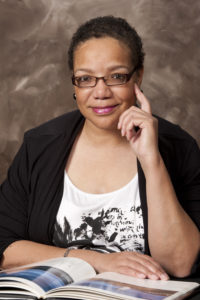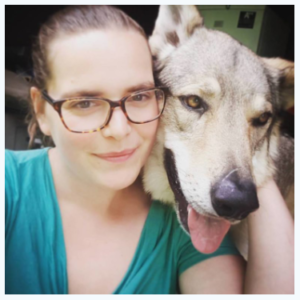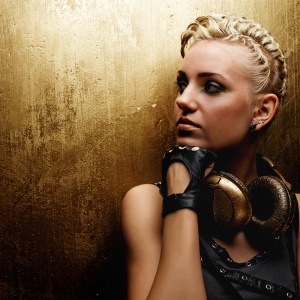 “This is the weirdest book I’ve ever read.”
“This is the weirdest book I’ve ever read.”
That’s what one woman wrote in her pre-release review of my paranormal urban fantasy/romance/science fiction hybrid The Underground. What a fabulous compliment! I wasn’t going for weird when I wrote the story but that’s the way my mind works so I’m happy to know my weirdness shone through. Still, I wonder what it was about the novel she found strange. Could it be The Underground is the story of an alpha werewolf and an interstellar assassin who fall for each other? Hm”¦maybe it was the sex. It’s not every day one snags a ringside seat at the Bedroom Olympics where one of the partners is an eight-foot wolf.
I’ve been asked how I came up with an outlandish tale like The Underground. Well, it’s like this. One oppressively hot and humid afternoon, I was sitting in a city bus with no air conditioning, sweating buckets in my vinyl seat and breathing car exhaust from outside the open window. Between the heat and the pollution, I was close to fainting. I didn’t want that to happen because the bus people the city where I lived were notorious for swiping your stuff if you fell asleep or died or something. So I started playing the “what-if” game. The game starts with a question, and then I keep asking questions about whatever topic I’m exploring until I’ve spun it out to it’s logical””or not-so-logical””conclusion. It’s not that much different from a teaching tool called the Socratic method, a sick, twisted version of the what-if game professors play with their innocent students.
Sweltering in that uptown bus, I asked what would it take for a werewolf to survive in today’s world?
I flung myself down that rabbit hole with glee, envisioning various rural and urban scenarios, the problems they present and how our werewolf could successfully deal with them. I was noodling my way through a complication when it struck me that a werewolf trying to lead as normal a life as possible in his world where he is marginalized and hunted by those in power wouldn’t be that much different from someone trying to lead a normal life in our world where he is marginalized and hunted by those in power. People die every day because of their skin color, sexual orientation and identity, belief systems, and whatever else the various human tribes, being the xenophobic and murderous lot they are, find unacceptable. To live, a werewolf would have to spin a web of lies and keeping track of them all would be a Herculean task. Then there’s having to live in a constant state of hyperawareness, knowing every person who crosses his path is a potential enemy. Surviving the human horde would be like walking a tightrope a hundred feet above the ground without a safety net. What a hard and exhausting way to live. But how much different really, is the werewolf’s life from his real-world counterparts””those who can’t escape the closet, who can’t break out of the egg, or who can’t bear living life as a second-class citizen? I didn’t create a world for The Underground“”it’s our world.
That’s not quite the end of it, though. I was in the middle of an explanation about The Underground world to a friend (and potential reader) when she interrupted me and said, “so why the space alien?” First, let me tell you that rabbit hole took me to some mighty strange places. While I was rooting around down there, I began thinking about how someone from another planet might be treated by society’s outcasts if they discovered her. All things being equal, would they embrace her otherness, recognize her as kindred and hide her amongst themselves? Or, like humans, would they reject her, seeing her as a threat and betray her presence to the larger world? I had no answer. But the question intrigued me so I decided to explore it. If you want to know how it worked out, buy my book.
So the trials faced by werewolves and other paranormals trying to survive in a fantasy world where exposure means certain death aren’t much different than the those faced by any other persecuted people in the real world. Which led me to a final question: What would happen in The Underground’s world””or in this one””if the downtrodden reached the breaking point and decided they wouldn’t take their lot anymore? History tells us the answer. Oppress people long enough and hard enough, they will eventually rise up. And the results won’t be pretty.
 About the author: Award-winning author Roxanne Bland was born in the shadows of the rubber factory smokestacks in Akron, Ohio but grew up in Washington, D.C. As a child, she spent an inordinate amount of time prowling the museums of the Smithsonian Institution. She also spent an inordinate amount of time reading whatever books she could get her hands on, including the dictionary. A self-described “fugitive from reality,” she has always colored outside the lines and in her early years of writing, saw no reason why a story couldn’t be written combining the genres she loved, and did so despite being told it wasn’t possible.
About the author: Award-winning author Roxanne Bland was born in the shadows of the rubber factory smokestacks in Akron, Ohio but grew up in Washington, D.C. As a child, she spent an inordinate amount of time prowling the museums of the Smithsonian Institution. She also spent an inordinate amount of time reading whatever books she could get her hands on, including the dictionary. A self-described “fugitive from reality,” she has always colored outside the lines and in her early years of writing, saw no reason why a story couldn’t be written combining the genres she loved, and did so despite being told it wasn’t possible.
Today, she writes stories that are hybrids of paranormal urban fantasy, romance, and science fiction. She is enamored of Great Danes and has been owned by several. She lives in Maryland with her current owner, Daisy Mae. Discover more at http://www.roxannebland.rocks, or follow her on Twitter as @RoxanneBland2.







